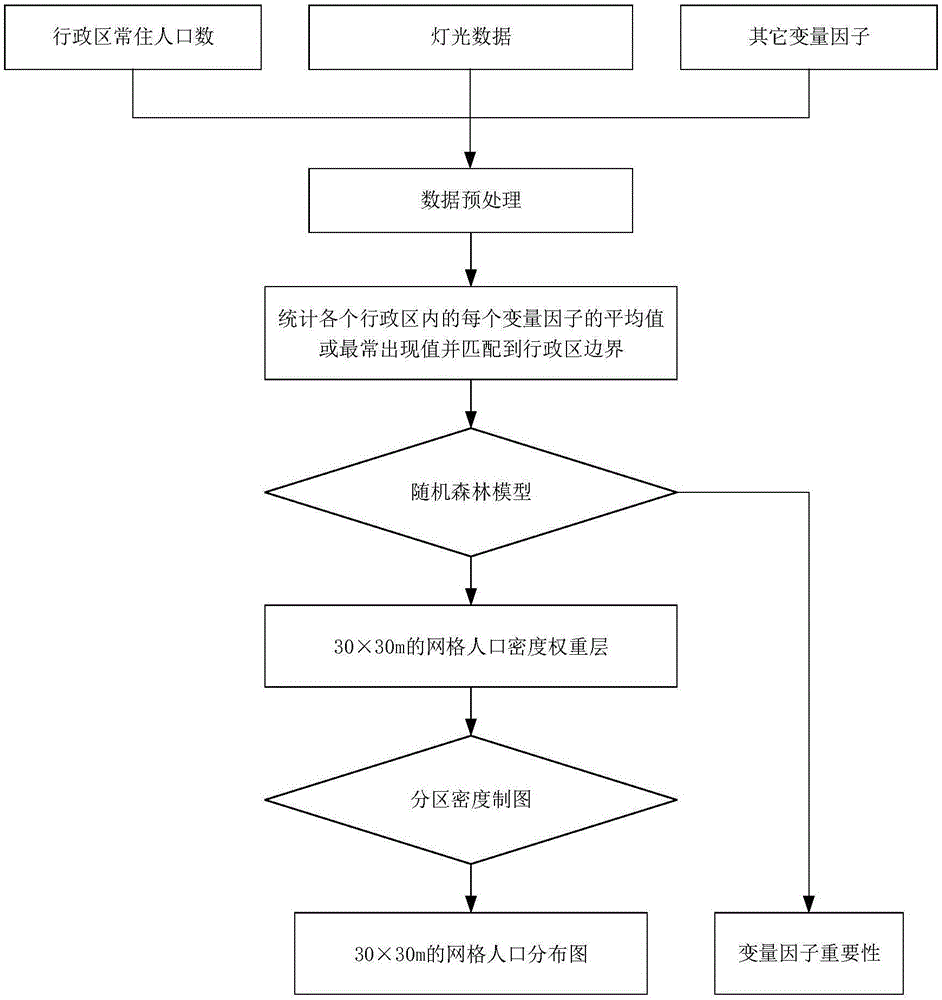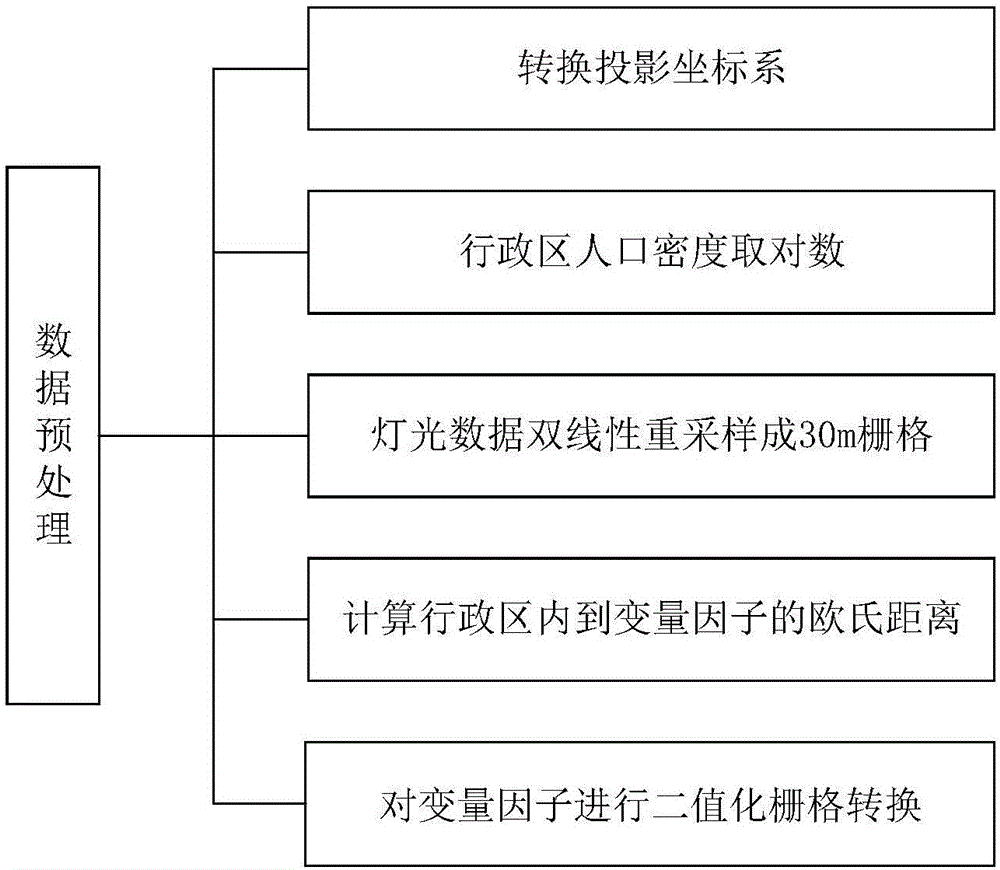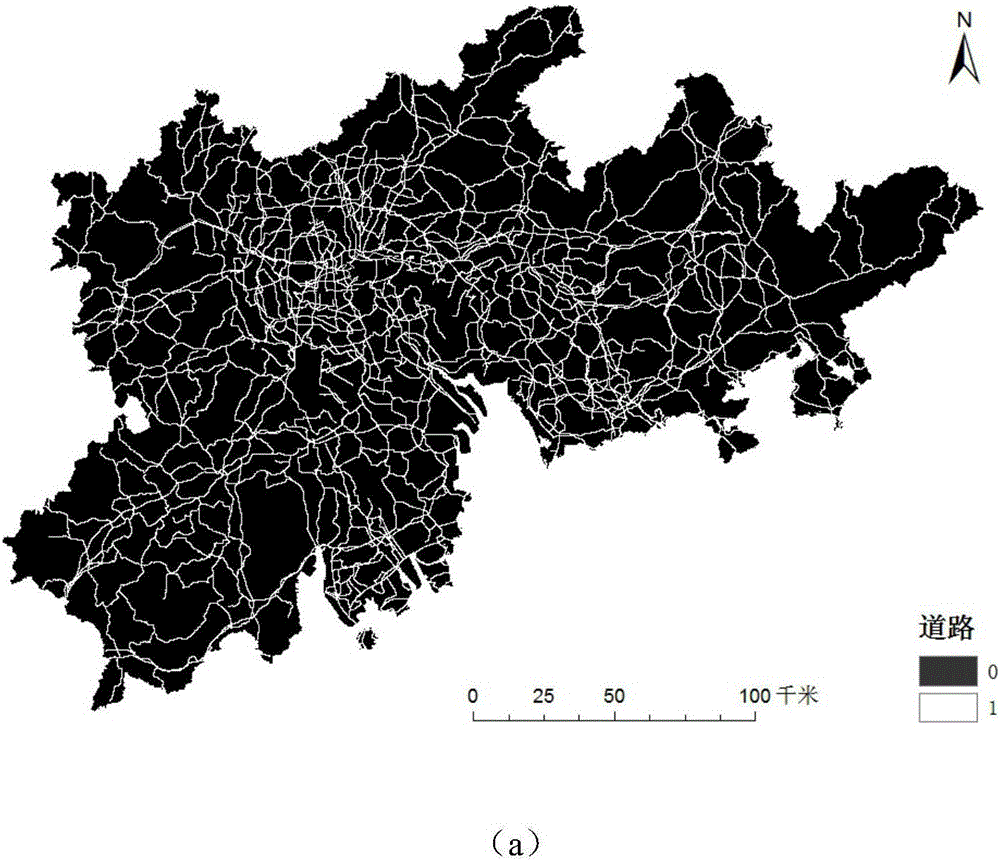Random forest model-based population data spatialization method
A technology of random forest model and population data, which is applied in the field of population data spatialization based on random forest model, which can solve the problems of long data update cycle, spatial mismatch, and limited population statistics.
- Summary
- Abstract
- Description
- Claims
- Application Information
AI Technical Summary
Problems solved by technology
Method used
Image
Examples
Embodiment approach
[0031] figure 1 The implementation of the population data spatialization method based on the random forest model in an example is shown, including the following steps:
[0032] (1) Obtain the original data of the permanent population of the administrative area, lighting data, and other natural and socio-economic factors that have an impact on the population distribution, and preprocess the data to obtain the logarithm of the variable factor distance data, lighting data, and the population density of the administrative area and the variable factor data converted from the binarized raster;
[0033] (2) Count the average value or the most frequently occurring value of each variable factor in each administrative region and match it to the boundary of the administrative region;
[0034] (3) The variable factor distance data obtained after step (1) preprocessing, the logarithm of the light data and the population density of the administrative area, the binarized variable factor ras...
PUM
 Login to View More
Login to View More Abstract
Description
Claims
Application Information
 Login to View More
Login to View More - R&D
- Intellectual Property
- Life Sciences
- Materials
- Tech Scout
- Unparalleled Data Quality
- Higher Quality Content
- 60% Fewer Hallucinations
Browse by: Latest US Patents, China's latest patents, Technical Efficacy Thesaurus, Application Domain, Technology Topic, Popular Technical Reports.
© 2025 PatSnap. All rights reserved.Legal|Privacy policy|Modern Slavery Act Transparency Statement|Sitemap|About US| Contact US: help@patsnap.com



